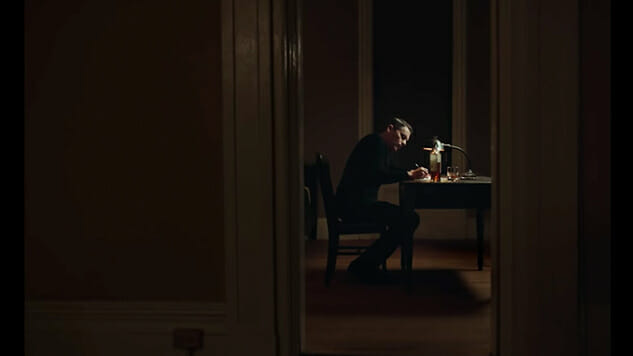The Transcendence of First Reformed

Editor’s Note: The following contains spoilers for First Reformed.
It has been a recurring joke that Paul Schrader literally wrote the book on Transcendental Style in Film, his seminal 1972 text that focused on the films of Carl Th. Dreyer, Yasujiro Ozu and Robert Bresson. Though, when Schrader finally wrote and directed his own films, the transcendental style that he had described in those directors was largely absent from his own work. Schrader admired and even loved the pictures his criticism pondered, but as if caught in a rebellion to his strict Calvinist upbringing, it was the visceral verve of hard-edged American cinema that most seduced him.
Possible that Schrader got swept up in the undertow of his collaborator Martin Scorsese, for whom Schrader wrote classics like Taxi Driver and Raging Bull. His first screenplay credit was The Yakuza, a wonderful Sydney Pollack genre flick that showed Schrader’s obsessions and signatures already fully formed, alchemized even: violence of body and soul, linked with a bitter wit but also a solemn faith in something to pull us through. That “something” is where, perhaps, a seed of the transcendental still gestated in Schrader’s art.
From April 9th through the 26th in 1972, the Pacific Film Archive and Paul Schrader presented a film series to highlight works of Dreyer, Ozu, Bresson, Bud Boetticher and Roberto Rosselini. In his program notes Schrader wonderfully summarizes the thoughts that are given more expanse in his book. Below are excerpts:
The transcendental style in film has three stages: the everyday, disparity, and stasis. Through techniques of limitation and restriction the everyday suggests the world is cold, unfeeling, and without emotion or meaning. In the cold, factual minutiae-oriented of everyday there is no potential for emotion or meaning; there is no place it can come from.
Difficult to say what The Last Temptation of Christ would have been if directed by Schrader instead of Scorsese, but even then Schrader’s most overtly religious screenplay didn’t manifest in the spiritual exercise of the transcendental style Schrader’s book talks about.
The idea of the transcendental is presented in three very different ways by Dreyer, Ozu and Bresson—and certainly those three don’t have a monopoly on its quality—but the essence of its method lies in a film withholding from the viewer in order for the viewer to lean in to the experience of the film, eventually coming to join the work on its meditative wavelength. Most films foist the experience upon the viewer. They shout, they plead, they manipulate. The transcendental film is reverent of the thought it carries, is reverent of the viewer’s view, reverent for the simple power of the right image delivered without fuss or accoutrement. It seeks not to overwhelm the viewer with surges and swells. It values stillness and quiet. It wants to hear the viewer’s thought in response. It wants awareness.
But through the past several decades, Schrader had given his considerable abilities over to the type of brash filmmaking that had given him his career. No doubt for that type of cinema’s value, either, when executed by the likes of Pollack and Scorsese. For Schrader, the stylistic panache of his peers’ films seemed almost inextricably linked to a type of sordidness in content, and this became a defining element of Schrader’s work, along with the “man in a room” or “a man in crisis” trope (note the strong protagonist arc parallels of Taxi Driver, Light Sleeper and First Reformed). The closest that Schrader the artist came to pulling from Schrader the academic was perhaps 1985’s Mishima: A Life in Four Chapters or 1997’s Affliction, but the reality is that Schrader hadn’t made a film in the transcendental style…until he made First Reformed. It was a film Schrader swore he would never try to make; then, a couple years ago he was having a discussion with a Pawel Pawlikowski (director of Ida) and realized, simply, it was time. While the context and the characters and possibly even the central ideas of the film did not exist in Schrader prior to that decision, when Schrader talks in interviews about the writing process one can almost feel how ready this film was to be born of him, to be put to page. But it had to be chosen to be written. Schrader finally chose to write it.
-

-

-

-

-

-

-

-

-

-

-

-

-

-

-

-

-

-

-

-

-

-

-

-

-

-

-

-

-

-

-

-

-

-

-

-

-

-

-

-








































